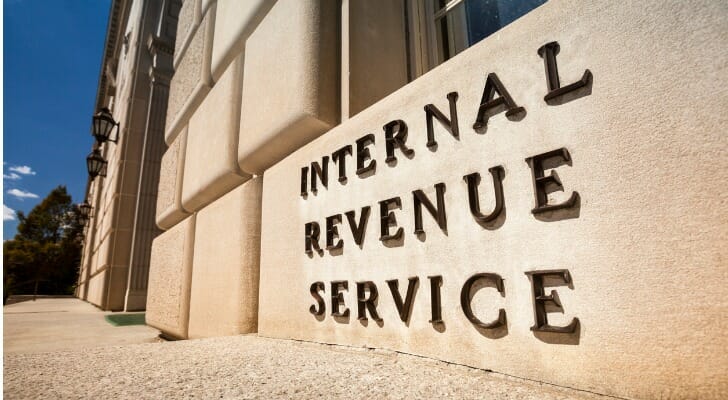Private letter rulings, commonly known as “guidances,” are the bane of tax attorneys everywhere. They are very specific, vast in number and essential to understanding how tax law works. In brief, it’s a written answer issued by the IRS to a specific taxpayer question. It gives the agency’s position on this particular filing but is also considered an official statement by the IRS on how tax law works on this and related areas. Though not considered a binding precedent for future decisions, it is a strong indication of how the IRS will rule in similar situations. Here’s what you need to know.
A financial advisor can help you optimize your tax plan. Find a fiduciary advisor today.
How the IRS Issues Guidance
Tax is one of the most complicated areas of U.S. law. There are two main reasons for this.
First, there’s simply a lot of it. When people talk about “tax law” they’re referring to a body of work that includes, among other things:
- The tax statute itself, Title 26 of the U.S. Code
- IRS Regulations
- IRS Statements interpreting its regulations and the tax statute
- Judicial opinions and case law on tax issues
Politifact measures the tax statute alone at more than 6,500 pages. Then there are the regulations that define how the IRS will enforce U.S.C. 26, the guidances addressing this legislation, the judicial opinions on whether the IRS interpreted all of it correctly, and so on.
The second reason is that tax law is one of the most specific areas of U.S. law. All of this sheer volume of tax law comes, in part, from the fact that tax law doesn’t leave much room for interpretation. When it comes to taxes, people need specific answers to a very specific question: How much do I owe? The IRS does not function on ambiguity nor does it allow people to reasonably decide how much they should owe. Come Tax Day every year, taxpayers need to know exactly how much to pay without having to resolve the issue in court.
This creates problems.
When the vast, complicated body of tax law interacts with the complexity of any given individual’s or business’ finances, the results are often unpredictable. Yet in a system that seeks specificity, there’s not much room to adapt around unpredictability. A taxpayer’s filing is right or its wrong … and it’s not always possible to know that answer ahead of time.
So the agency issues what are known as “guidances.” An IRS guidance is a statement from the agency about how tax laws will apply to a specific set of facts. Through its guidances, the tax agency addresses specific questions as they arise.
What Are Private Letter Rulings?

A private letter ruling is a form of individual guidance that the IRS publishes at the request of a taxpayer. It applies the tax law to a specific set of facts and advises the taxpayer of their rights and responsibilities in that situation. It is “issued to establish with certainty the federal tax consequences of a particular transaction before the transaction is consummated or before the taxpayer’s return is filed,” the agency says.
These guidances are issued in response to a written request that a taxpayer submits. They are binding if the taxpayer “fully and accurately described the proposed transaction in the request and carries out the transaction as described.” However, as mentioned earlier, a private letter ruling shouldn’t be relied upon as precedent by other taxpayers or IRS personnel. Lastly, these rulings are typically made public after all information that could identify an individual taxpayer has been redacted or removed.
The purpose of a private letter ruling is to help someone figure out their tax liability in advance before they file their taxes. This allows the individual to know what they owe and helps the IRS to avoid the time-consuming process of bouncing back someone’s tax return.
How Private Letter Rulings Affect Tax Law
In one sense, private letter rulings do not affect tax law at all. The IRS is clear that any given PLR applies only to the situation in front of it. This is a specific answer to a specific question: “How much do I, personally, owe right now?”
But in law, all precedent is considered informative even when it is nonbinding. A private letter ruling does not bind the IRS to any future action, but it does tell tax attorneys how the agency views any given situation. If the agency allows someone to depreciate their Toyota Camry, odds are they’ll let the next taxpayer do the same with a Ford F-150.
When trying to advise clients, tax attorneys always start by looking for specific answers to their questions. They look first to regulations and binding guidances such as revenue rulings, hoping to find a direct match to the client’s needs. When that’s not available, the next step is to look for a close comparison.
A private letter ruling does not require the IRS to treat future cases the same way, but it indicates how the agency will rule in a similar situation. Tax lawyers or even individuals can use them as a resource to help answer questions when the existing law is ambiguous.
How To Get A Private Letter Ruling

There’s a catch, though. A private letter ruling is typically not a viable option for most taxpayers with questions for the IRS. Getting a private letter ruling is a time-consuming, highly technical and often expensive process. You must submit your request to the IRS in writing, on an unresolved issue relevant to a specific, upcoming tax filing. The IRS will not issue a private letter ruling for taxes that have already been filed, nor for ambiguous issues that relate to uncertain tax liabilities in the future. It will also not respond to issues that it considers resolved by the existing body of tax law.
You must include the full details of your tax situation, and the IRS has a list of around 50 questions that you must answer in order to get a ruling. If the agency decides that you did not answer one of these questions to its satisfaction, or that the answer did not accurately reflect your financial situation, then it may either not issue a ruling or decide that its ruling is not binding.
You also must pay a processing fee. Fees range from hundreds of dollars to tens of thousands. While individuals may pay as little as $275, this is unusual. The common user fee for a PLR ranges between $5,000 and $38,000.
If you meet these requirements, the IRS will typically get back to you within 21 days to discuss the next steps. Together, the complexity and high costs of a private letter ruling tend to make this a good option for wealthy taxpayers or businesses looking to clarify significant tax bills in advance of filing. For individuals, it’s almost always better to seek a tax professional.
Other Types of IRS Guidance
Private letter rulings are one form of guidance that the IRS can issue. In general, there are other types of guidance that the tax agency publishes:
- Revenue rulings
- Revenue procedures
- Technical advice memoranda
- Notices
Each of these serves a different function. A revenue ruling, for example, occurs when the IRS independently decides to clarify some issue of how to apply tax law to a given set of facts.
For example, the agency may decide to clarify whether taxpayers can deduct a specific business expense. A revenue procedure, on the other hand, is an announcement by the IRS on how to calculate, file or otherwise process taxes. For example, the agency may decide to issue a revenue procedure to clarify what form taxpayers should use to list a given business deduction or how to calculate it.
Bottom Line
A private letter ruling is a statement from the IRS on how it applies the tax law to a specific set of facts for a specific taxpayer. They are issued when someone asks for a ruling. While they do not set binding precedents for future taxpayers, they are valuable guidance in determining how the IRS views the law. However, getting a private letter ruling is an expensive, time-consuming and highly technical process. As a result, it’s not viable for average taxpayers.
Tax Tips
- Independent contractors are a large and growing part of the workforce. They can also have some tricky nasty taxes to file. If you’re an independent contractor or you’re considering some work on the side, be sure to familiarize yourself with these tax rules.
- However, taxes don’t have to be ugly or even unpleasant at all. A financial advisor with tax planning expertise can smooth out the process for you. Finding a financial advisor doesn’t have to be hard. SmartAsset’s free tool matches you with up to three vetted financial advisors who serve your area, and you can interview your advisor matches at no cost to decide which one is right for you. If you’re ready to find an advisor who can help you achieve your financial goals, get started now.
Photo credit: ©iStock.com/Pgiam, ©iStock.com/sefa ozel, ©iStock.com/andresr
